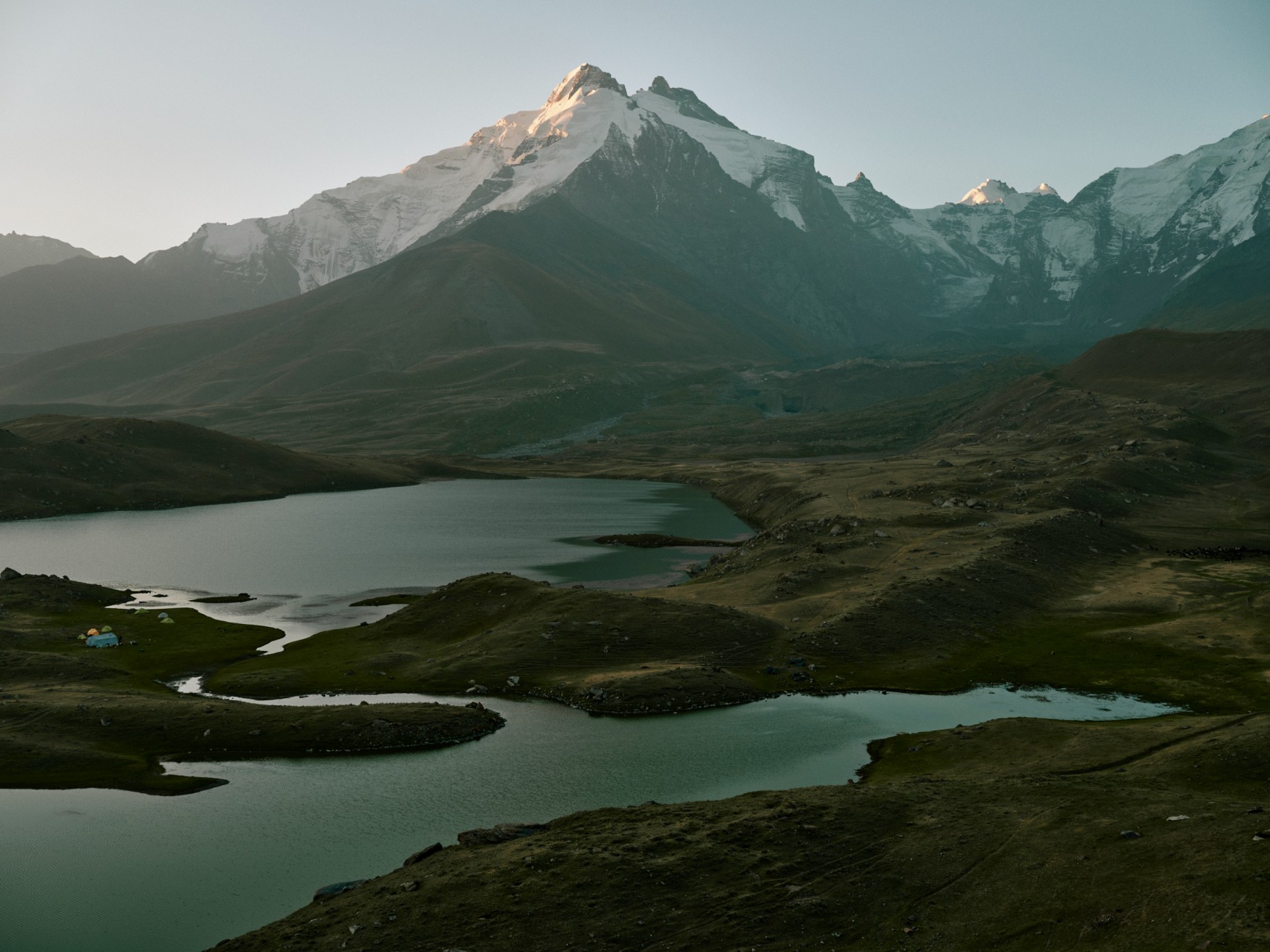
PAMIR
From ice to microorganisms and humans: Toward an interdisciplinary understanding of climate change impacts on the Third Pole.
About the project
Climate-induced changes are dramatic on the Third Pole, but we understand them much less than those in the Arctic or Antarctic, despite the Third Pole’s crucial role in supplying water to millions of downstream populations and ecosystems. The Pamir region is unique in its hydroclimatic and cryospheric character. It contains a broad variety of cryospheric phenomena, leading to complex streamflow regimes and geohazards. Its headwaters are crucial to supply an otherwise arid region, making the Pamir one of the most important mountain water supplies globally. Strikingly, the region contains both shrinking and stable glaciers (the ‘Pamir-Karakoram Anomaly’). The goal of this research programme is to characterise the current state of the Pamir cryosphere to an unprecedented degree, to understand the causes and character of the Anomaly, as well as its impacts on ecosystems, hazards and water resources. A few of its key objectives are to extract an ice core unlocking the climate archive of the past millennium; elucidate the state and distribution of permafrost in the region; constrain the mass balance and accumulation of glaciers at an unprecedented regional level; establish benchmark measurements of microbial adaptation to rapidly changing cryospheric environments; and finally build the evidence base of regional cryospheric hazards by disentangling their glaciological and permafrost causes.
The SPI Flagship Programme PAMIR is an interdisciplinary undertaking to characterize the current state of the Pamir cryosphere to an unprecedented degree, as well as its impacts on ecosystems, hazards and water resources. Together, these ambitious scientific objectives will generate important historic and contemporary understanding of this key headwater region, enabling a better understanding of the future of this water tower.
FUNDING: Swiss Polar Institute Flagship Programme
PERIOD: 2022-2025

What have we found?
Kyzylsu – A new experimental catchment in the western Pamirs –
The Pamirs and neighboring mountain ranges are home to some of the few healthy glaciers in the world. Furthermore, these glaciers lie at the headwaters of vital Central Asian river basins that are extremely vulnerable to 21st century climatic and anthropogenic change. In 2021, the Cryosphere and Mountain Hydrosphere team (then based at WSL in Switzerland) found an opportunity to establish a new catchment monitoring site in collaboration with local scientists in the Northwestern Pamirs of Tajikistan. The primary focus of the research was to investigate glaciological and hydrological processes related to Kyzylsu Glacier. To this end, we installed several major hydro-meteorological stations and time-lapse cameras on and around the glacier. The monitoring network was then maintained and completed during annual visits, with the next visit planned for Summer 2025. This study site joined in 2022 an international network of highly instrumented mountain catchments coordinated through the INARCH project. The data collected at this site enabled catchment water balance simulations which led to a first publication in 2024 (Fugger et al. 2024 – see below) and will lead to a second publication in 2025 (Jouberton et al. in review).
Evaporative Flux partitioning at the climatic ends of High Mountain Asia –
High elevation headwater catchments are complex hydrological systems that seasonally buffer water and release it in the form of snow and ice melt, modulating downstream runoff regimes and water availability. In High Mountain Asia (HMA), where a wide range of climates from semi-arid to monsoonal exist, the importance of the cryospheric contributions to the water budget varies with the amount and seasonal distribution of precipitation. Losses due to evapotranspiration and sublimation are to date largely unquantified components of the water budget in such catchments, although they can be comparable in magnitude to glacier melt contributions to streamflow. We simulated the hydrology of three high elevation headwater catchments in distinct climates in HMA over 10 years using an ecohydrological model geared towards high-mountain areas including snow and glaciers, forced with reanalysis data.
Our results show that evapotranspiration and sublimation together are most important at the semi-arid site, Kyzylsu, on the northernmost slopes of the Pamir mountain range. Here, the evaporative loss amounts to 28% of the water throughput, which we define as the total water added to, or removed from the water balance within a year. In comparison, evaporative losses are 19% in the Central Himalaya and 13% on the Southeastern Tibetan Plateau. At the three sites, respectively, sublimation removes 15%, 13% and 6% of snowfall, while evapotranspiration removes the equivalent of 76%, 28% and 19% of rainfall.


External members of the project (see PAMIR page above for full list)
University of Fribourg
Martin Hoelzle (co-PI)
Christine Bichsel
Evan Miles (also UZH and WSL)
EPFL
Tom Battin
University of Zürich
Simon Allen (Also Uni Geneve)
University of Bern
Margit Schwikowski (also PSI)



